Previous
Next
Zea Mays L.
Purple corn (Zea Mays L.) also known as purple cob, is a variety of corn native to Peru. Its origin dates back to pre-Inca times as seen in artistic ceramic representations of the Moche culture (AD 100-700).
It originated in the mid-altitude region of central Peru, then spread to the Peruvian coast and later to the high-altitude Andean regions. It is characterized by its violet color provided by anthocyanins, a natural pigment that we also find in cherries, blueberries, plums and have antioxidant properties.

Functionality
Purple corn is a superfood that stands out for its nutritional content. It contains proteins, oil and its main component is starch.
It has essential vitamins and minerals such as iron, phosphorus, niacin and anthocyanins. The last one is one of its main compounds and the reason why purple corn is one of the most beneficial foods for humans. It also has phytonutrients that strengthen the immune system.
Benefits
- Helps to prevent cancer.
- Helps to cardiovascular health.
- It is a natural anti-inflammatory.
- Strengthens the immune system.
- Helps to lose weight and slows down the aging process.
- Lowers blood pressure.
- Improves visual acuity.
- Helps to control and reduce blood cholesterol levels and maintain low blood pressure.
- Good for people with diabetes and for people with obesity.

Suggested use
It is used for preparing jam, yogurt, desserts and the drink called chicha morada. We use purple corn flour to made the flour to make risotto, pasta, stews, tamales. It is also used as a natural colorant in the food industry, beauty and make-up industry and drinks.
Presentations

Location


